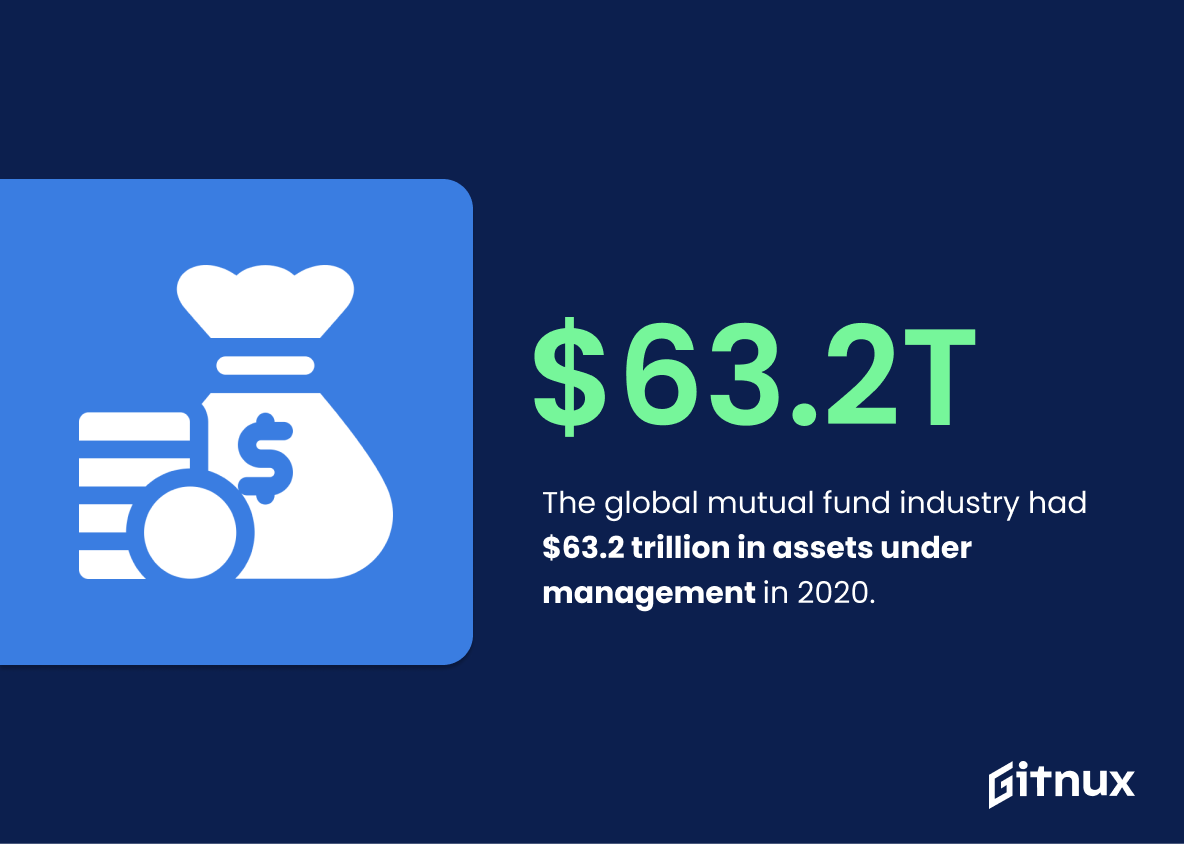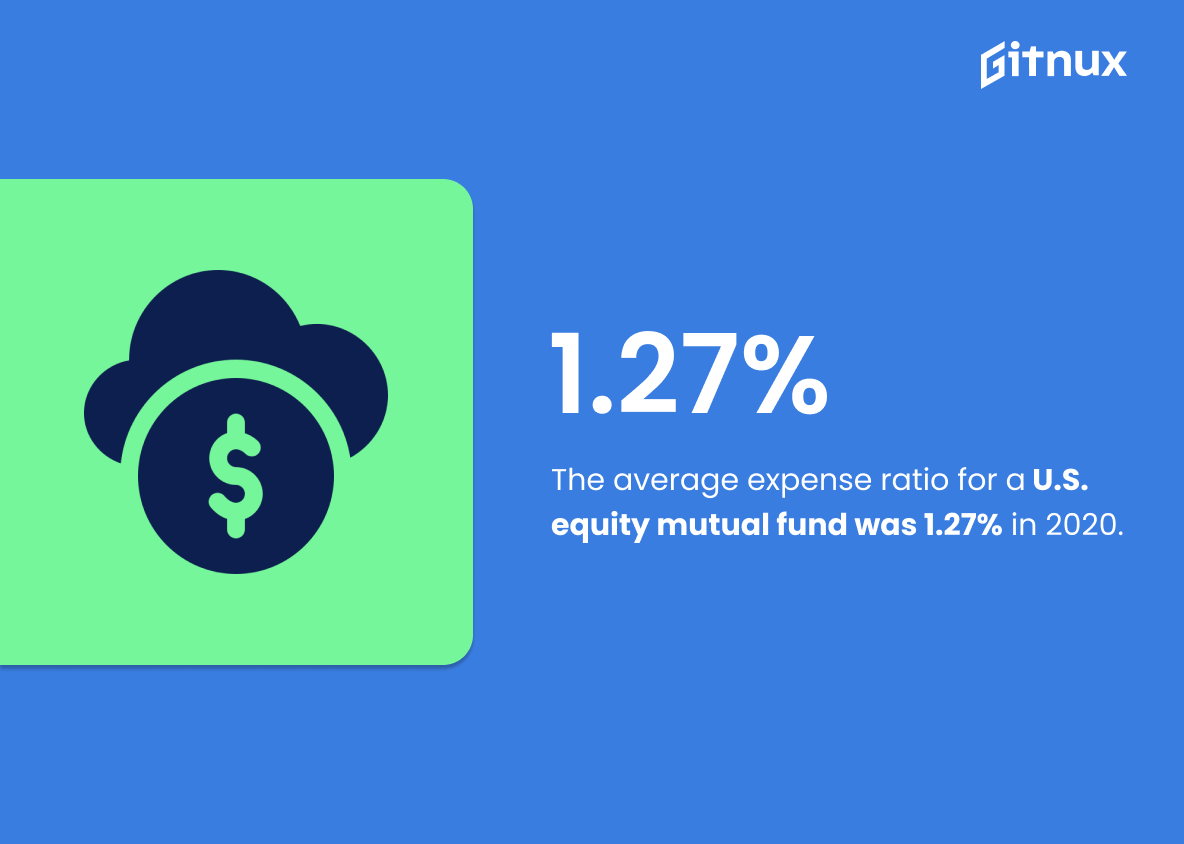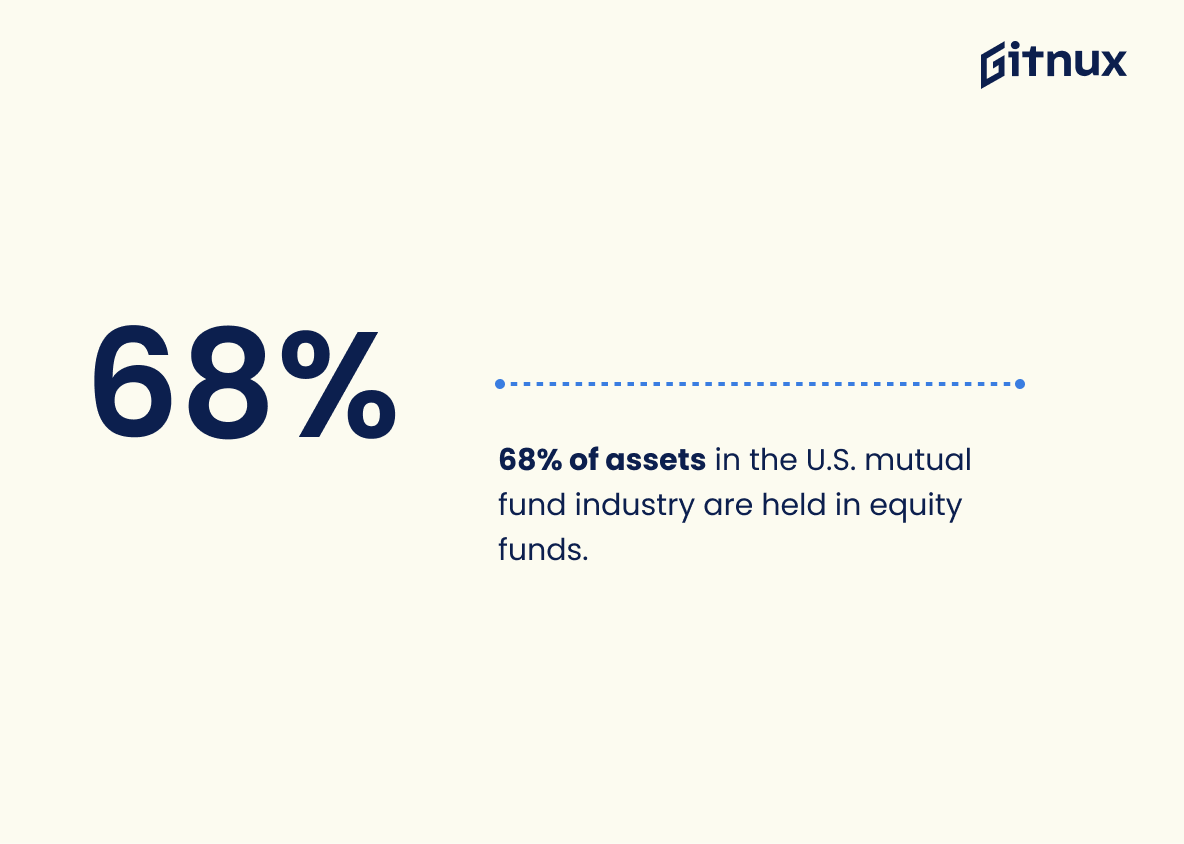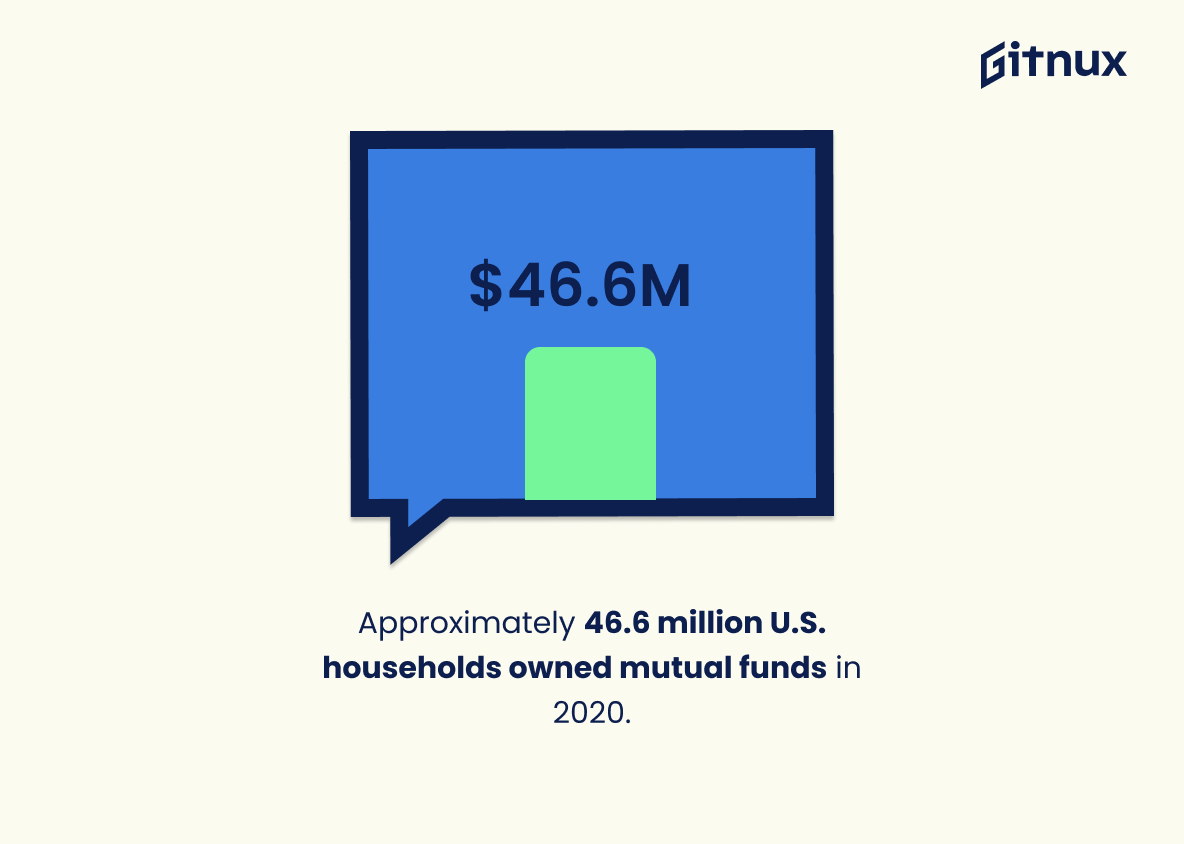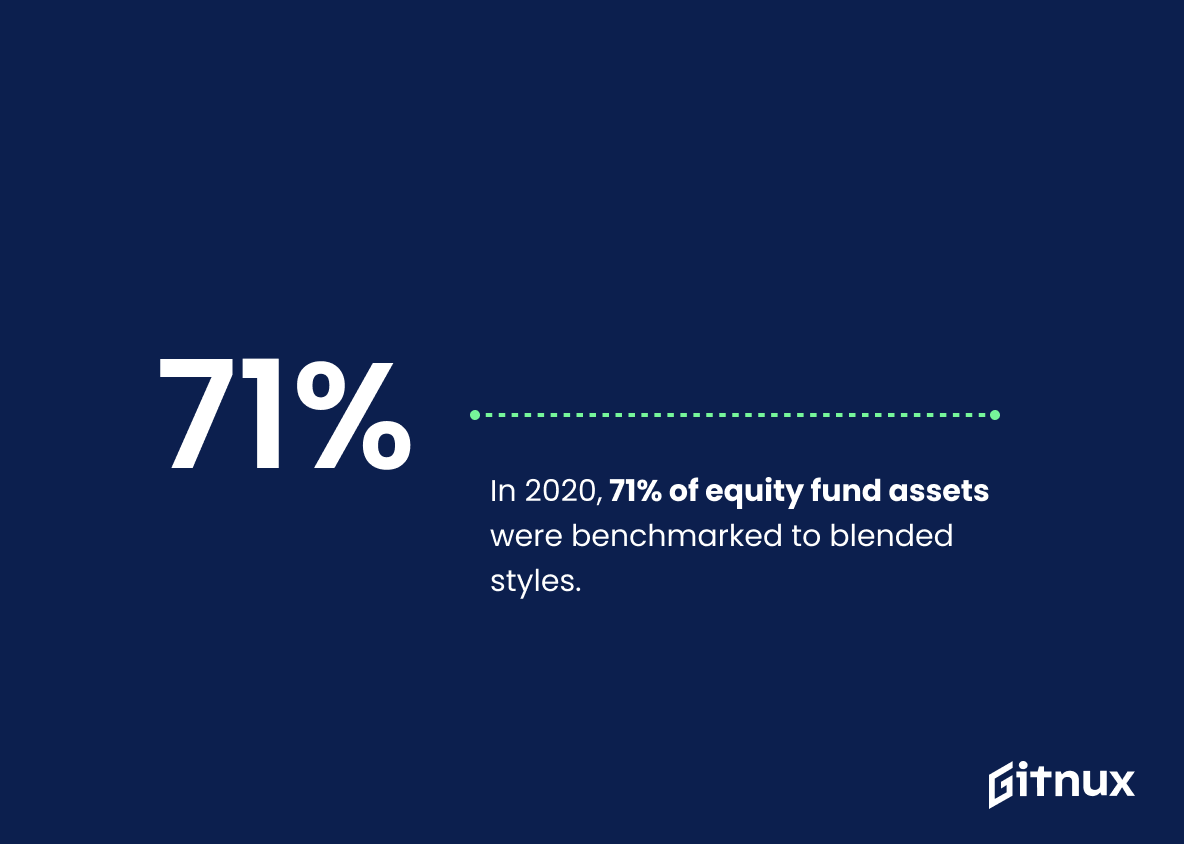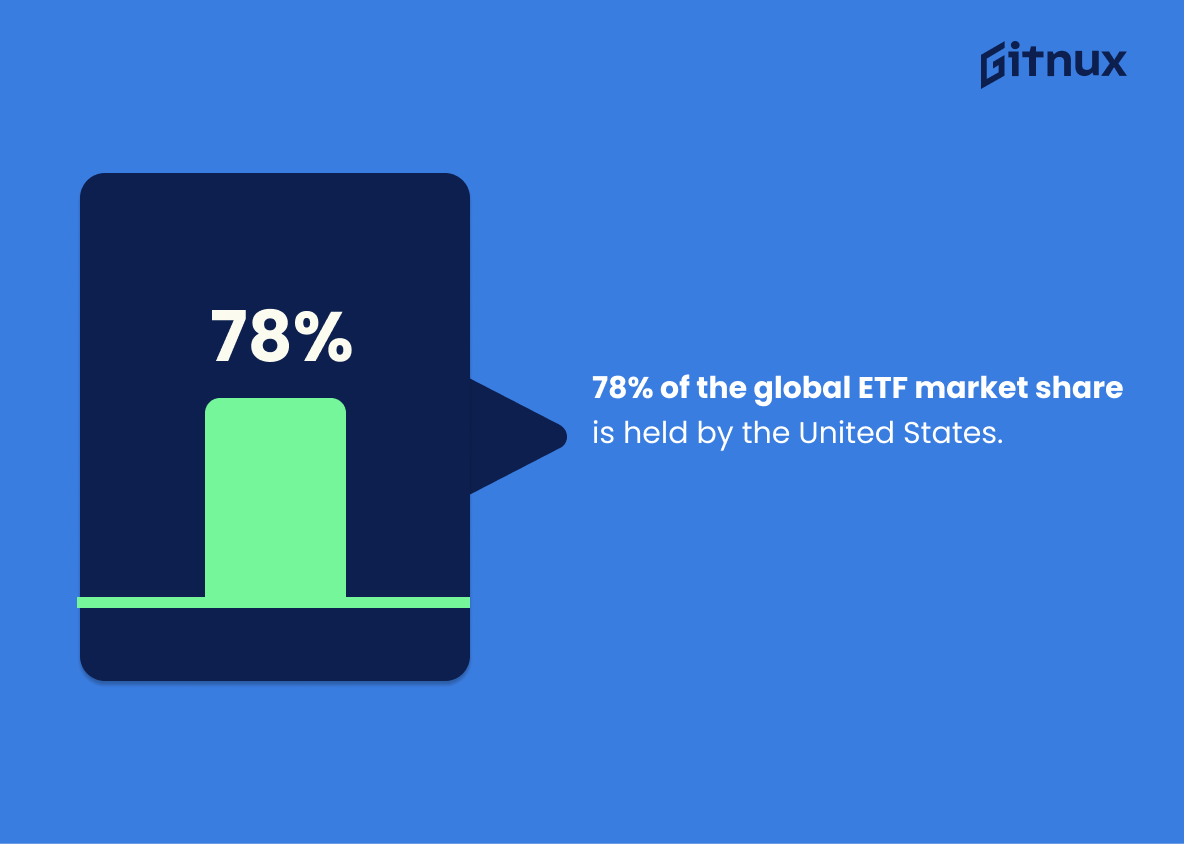Mutual funds are an important part of the global financial landscape, and understanding their statistics can help investors make informed decisions. This blog post will explore 20 key mutual fund statistics from reliable sources such as ICI, Statista, Investment News, Morningstar and Barron’s.
We’ll look at how many mutual funds exist in the United States; what percentage of customers are retail investors; total assets under management globally and domestically; market share by type of fund (equity vs index-tracking); net inflows to equity funds in 2021; average expense ratios for U.S. equity funds; performance relative to passive indexing strategies over time frames ranging from one quarter to 10 years or more; largest mutual fund worldwide by asset size; top five U.S.-based managers ranked by AUM (assets under management); ETF market share held by the US compared with other countries around the world ;and finally a breakdown on household ownership levels across different types of financial assets including mutual funds specifically . Let’s dive into these stats.
This statistic is a telling indication of the importance of retail investors in the mutual fund industry. It highlights the fact that the majority of mutual fund customers are everyday people, rather than large institutional investors. This is significant because it shows that mutual funds are accessible to a wide range of investors, regardless of their financial background or experience. This statistic is a reminder that mutual funds are a viable option for anyone looking to diversify their portfolio and grow their wealth.
9,599 mutual funds were present in the United States as of December 2020.
This statistic is a testament to the sheer number of mutual funds available in the United States, providing a snapshot of the current state of the industry. It is a useful indicator of the diversity of investment options available to investors, and the potential for growth in the mutual fund sector. It also serves as a reminder of the importance of researching and understanding the different types of mutual funds before investing.
Mutual Fund Statistics Overview
The global mutual fund industry had $63.2 trillion in assets under management in 2020.
This statistic is a testament to the immense size and scope of the global mutual fund industry. It highlights the sheer magnitude of the industry, and the sheer amount of money that is being managed by mutual funds. This statistic is a powerful indicator of the importance of mutual funds in the global financial landscape, and serves as a reminder of the potential of mutual funds to help people achieve their financial goals.
U.S. mutual funds hold $23.8 trillion in assets as of December 2020.
This statistic is a testament to the immense power of mutual funds in the U.S. economy. It shows that mutual funds are a major force in the financial markets, with a staggering amount of assets under their control. This statistic is a reminder of the importance of mutual funds in the financial landscape and the need to understand them in order to make informed decisions.
Equity funds made up 52% of the worldwide mutual fund market in 2020.
This statistic is a telling indication of the popularity of equity funds in the global mutual fund market. It shows that investors are increasingly turning to equity funds to diversify their portfolios and capitalize on the potential for higher returns. This is an important trend to note for anyone interested in the mutual fund market, as it provides insight into the current investment landscape.
US equity funds experienced net inflows of $136 billion in February 2021.
The impressive statistic of US equity funds experiencing net inflows of $136 billion in February 2021 is indicative of the growing confidence in the stock market. This is a positive sign for investors, as it suggests that the market is continuing to grow and that investors are willing to take on more risk. This statistic is an important indicator of the health of the stock market and provides insight into the current state of the mutual fund industry.
Index-tracking funds made up 44.3% of all equity fund assets by 2020.
This statistic is a telling indication of the growing popularity of index-tracking funds. It shows that more and more investors are turning to these funds as a way to diversify their portfolios and gain exposure to the stock market without having to actively manage their investments. This shift in investor preferences is an important trend to note, as it has implications for the mutual fund industry as a whole.
The average expense ratio for a U.S. equity mutual fund was 1.27% in 2020.
This statistic is a crucial indicator of the cost of investing in a U.S. equity mutual fund. Knowing the average expense ratio helps investors understand how much of their returns are being eaten up by fees and other costs associated with the fund. This information is essential for investors to make informed decisions about their investments and to ensure they are getting the most out of their money.
87% of actively managed U.S. large-cap equity funds underperformed the S&P 500 in the 10-year period ending 2020.
This statistic is a stark reminder of the importance of diversifying one’s investments. It highlights the fact that, despite the best efforts of actively managed funds, the S&P 500 has outperformed them over the past decade. This serves as a cautionary tale for investors, demonstrating the need to spread their investments across multiple asset classes in order to maximize returns.
68% of assets in the U.S. mutual fund industry are held in equity funds.
This statistic is indicative of the fact that the majority of investments in the U.S. mutual fund industry are in equity funds. This is significant because it shows that investors are confident in the stock market and are willing to take on the risk associated with investing in equities. This is an important point to consider when discussing mutual fund statistics, as it provides insight into the current state of the market and the level of risk investors are willing to take on.
The average mutual fund expense ratio fell 4% in 2020.
The 4% drop in the average mutual fund expense ratio in 2020 is a significant indicator of the growing efficiency of mutual funds. This decrease in cost can be seen as a win for investors, as it means they can now access more of their returns without having to pay as much in fees. This is an important statistic to consider when evaluating the performance of mutual funds, as it can help investors make more informed decisions about their investments.
Hybrid funds made up 8% of the worldwide mutual fund market in 2020.
The fact that hybrid funds made up 8% of the worldwide mutual fund market in 2020 is indicative of the growing popularity of this type of investment. This is a trend that investors should be aware of, as hybrid funds offer a unique combination of stocks and bonds that can provide a more balanced portfolio. As such, it is important for investors to understand the potential benefits of hybrid funds and how they can be used to diversify their investments.
11.3% of equity mutual fund investors in the US have 20 years or more of experience.
This statistic is significant in the context of a blog post about Mutual Fund Statistics because it demonstrates the level of expertise that many investors have in the US. It shows that a large portion of investors have a wealth of knowledge and experience when it comes to investing in mutual funds, which can be a great source of comfort for those who are just starting out.
Approximately 46.6 million U.S. households owned mutual funds in 2020.
This statistic is a testament to the popularity of mutual funds among U.S. households. It shows that mutual funds are a widely used investment vehicle, with nearly half of all households owning them. This is an important statistic to consider when discussing mutual fund statistics, as it provides insight into the prevalence of mutual funds in the U.S. economy.
In 2020, 71% of equity fund assets were benchmarked to blended styles.
This statistic is a telling indication of the current trend in the mutual fund industry. It shows that the majority of equity fund assets are being allocated to blended styles, which suggests that investors are increasingly looking for a balance between growth and income. This could be due to the fact that blended styles offer a more diversified portfolio, allowing investors to benefit from both growth and income opportunities. Furthermore, this statistic could also be indicative of the fact that investors are becoming more risk-averse and are looking for a more conservative approach to investing.
78% of the global ETF market share is held by the United States.
This statistic is a telling indication of the immense influence the United States has on the global ETF market. It highlights the fact that the US is a major player in the ETF market, and its decisions and actions can have a significant impact on the global ETF market. This is especially relevant to a blog post about Mutual Fund Statistics, as it provides a valuable insight into the current state of the ETF market and the potential implications of US-based decisions.
Mutual funds held 24% of U.S. households’ financial assets in 2020.
This statistic is a testament to the growing popularity of mutual funds among U.S. households. It shows that mutual funds are becoming an increasingly important part of the financial portfolios of many households, and that they are being used to diversify and manage risk. This statistic is especially relevant to a blog post about mutual fund statistics, as it provides a snapshot of the current state of the industry and highlights the importance of mutual funds in the financial lives of many Americans.
Conclusion
The data presented in this blog post paints a comprehensive picture of the mutual fund industry. It is clear that retail investors make up the majority of customers, with 9,599 funds present in the United States and $63.2 trillion held globally as of 2020. In addition, U.S.-based equity funds experienced net inflows of $136 billion in February 2021 and index-tracking funds made up 44% of all assets by 2020. Furthermore, actively managed mutual funds underperformed passive index funds by 2%, while 78% market share for ETFs was held by the US alone last year. Finally, 24% financial assets were held within mutual fund investments across households in America during 2020 – indicating their importance to many individuals’ portfolios today.
References
0. – https://www.www.ici.org
1. – https://www.www.cnbc.com
2. – https://www.www.investmentnews.com
3. – https://www.www.statista.com
4. – https://www.www.morningstar.com
5. – https://www.us.spindices.com
